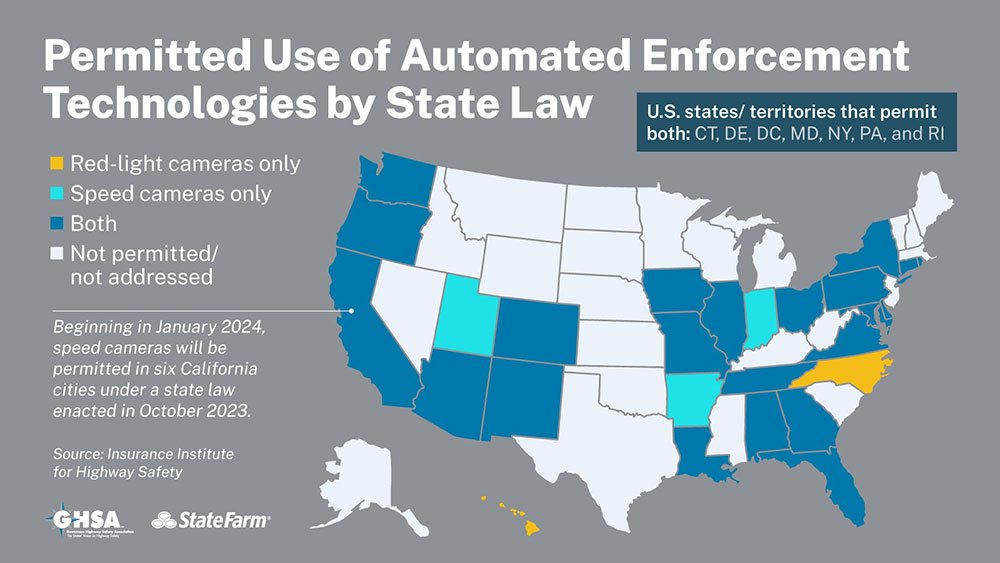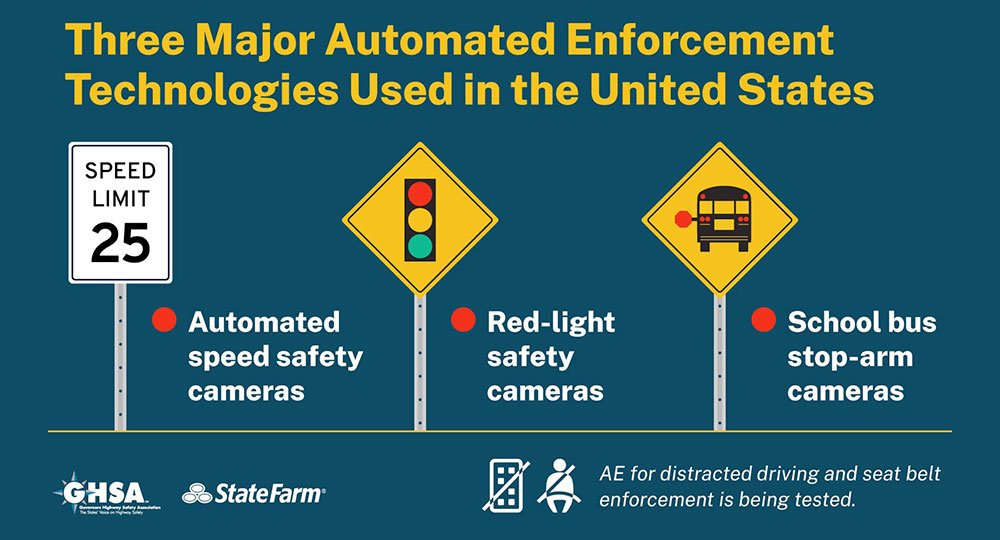In a bid to counter the alarming surge in roadway fatalities, the Governors Highway Safety Association (GHSA) released a compelling report endorsing the deployment of automated enforcement programs using traffic cameras. Highlighting a 30% increase in traffic deaths over the past decade, the GHSA emphasized the critical need for such initiatives. The report, backed by insurer State Farm, stressed the effectiveness of automated enforcement in curbing dangerous driving behaviors contributing to preventable accidents.
Federal Funding Opens Gates for Traffic Camera Systems
With the recent repeal of restrictions through President Biden’s “Build America Buy America Act,” GHSA’s Senior Director, Pam Fischer, revealed that up to 10% of the $15.6 billion allocated for highway safety programs can now fund automated traffic enforcement systems. This strategic shift allows highway safety offices to leverage federal funding for comprehensive programs addressing issues like speeding, red-light running, and aggressive driving.
Navigating Concerns: Privacy and Equity in Focus
While automated enforcement programs face scrutiny over privacy and potential bias, GHSA emphasizes their legality and the importance of addressing privacy concerns transparently. Fischer clarified that the primary goal is not invasion of privacy but rather ensuring road safety for all. The report acknowledged past criticisms, especially targeting low-income populations, and emphasized the potential for traffic cams to create a more equitable system by ensuring racially neutral and unbiased enforcement.
Debates on Effectiveness and Alternatives
The incorporation of automated enforcement programs into road safety initiatives has stirred a significant debate, sparking discussions on their effectiveness and prompting exploration of alternative measures. As stakeholders weigh the pros and cons, the nuanced landscape of this discourse requires careful consideration.
 Effectiveness in Focus: Advocates and Skeptics Clash
Effectiveness in Focus: Advocates and Skeptics Clash
Proponents of automated enforcement, led by organizations like the Governors Highway Safety Association (GHSA), assert the undeniable effectiveness of surveillance technologies in reducing traffic crashes and fostering safer roads. GHSA’s Senior Director, Pam Fischer, contends that the technology acts as a robust countermeasure to address prevalent issues such as speeding, red-light running, and aggressive driving. Advocates argue that the data and research unequivocally demonstrate the positive impact of automated enforcement in curbing dangerous driving behaviors.
However, critics, exemplified by the Electronic Frontier Foundation, challenge the notion that surveillance is the panacea for road safety. Josh Richman, the media relations director for the Electronic Frontier Foundation, argues that sacrificing privacy or disproportionately burdening disadvantaged communities through increased policing might not be the optimal solution. The clash between advocates and skeptics underscores the need for a comprehensive assessment of the effectiveness of automated enforcement.
Privacy Concerns: A Central Point of Contention
At the heart of the debate lies the overarching concern about privacy infringement. As surveillance technologies become more ubiquitous, the Electronic Frontier Foundation raises pertinent questions about the trade-off between enhanced safety and individual privacy rights. Rob Enderle, president and principal analyst with the Enderle Group, emphasizes the need for the benefits of surveillance, such as lower enforcement costs and potentially safer roads, to outweigh these privacy concerns. Striking a delicate balance becomes imperative to ensure public acceptance and compliance.
Equity Considerations: Striving for Fair Enforcement
One of the enduring criticisms against automated enforcement systems revolves around their potential to disproportionately target low-income populations. Instances where cities have scrapped their programs due to financial harm inflicted on disadvantaged communities highlight the complex interplay between technology and socioeconomic factors. GHSA counters this narrative, suggesting that automated enforcement has the potential to create a more equitable system by offering racially neutral and unbiased enforcement.
Exploring Alternatives: Traffic-Calming Measures in Focus

As the debate intensifies, voices advocating for alternative measures gain prominence. Suggestions to implement traffic-calming road modifications as an effective means to compel drivers to slow down come to the forefront. This alternative approach aims to enhance safety without compromising privacy or burdening specific communities. The key question becomes whether there are viable alternatives that can achieve the desired safety outcomes without resorting to surveillance.
Conclusion:
A Call for Innovative Roadway Safety Solutions
As the GHSA addresses the pressing issue of rising traffic fatalities, the advocacy for automated enforcement programs reflects a commitment to embracing innovative solutions. The acknowledgment of the need for a nuanced approach, considering both effectiveness and equity, positions traffic cameras as valuable tools in the broader landscape of ensuring road safety. The report concludes with a call for states to integrate automated enforcement seamlessly into community engagement efforts, emphasizing its potential to prevent severe injuries and save lives.
Read more: